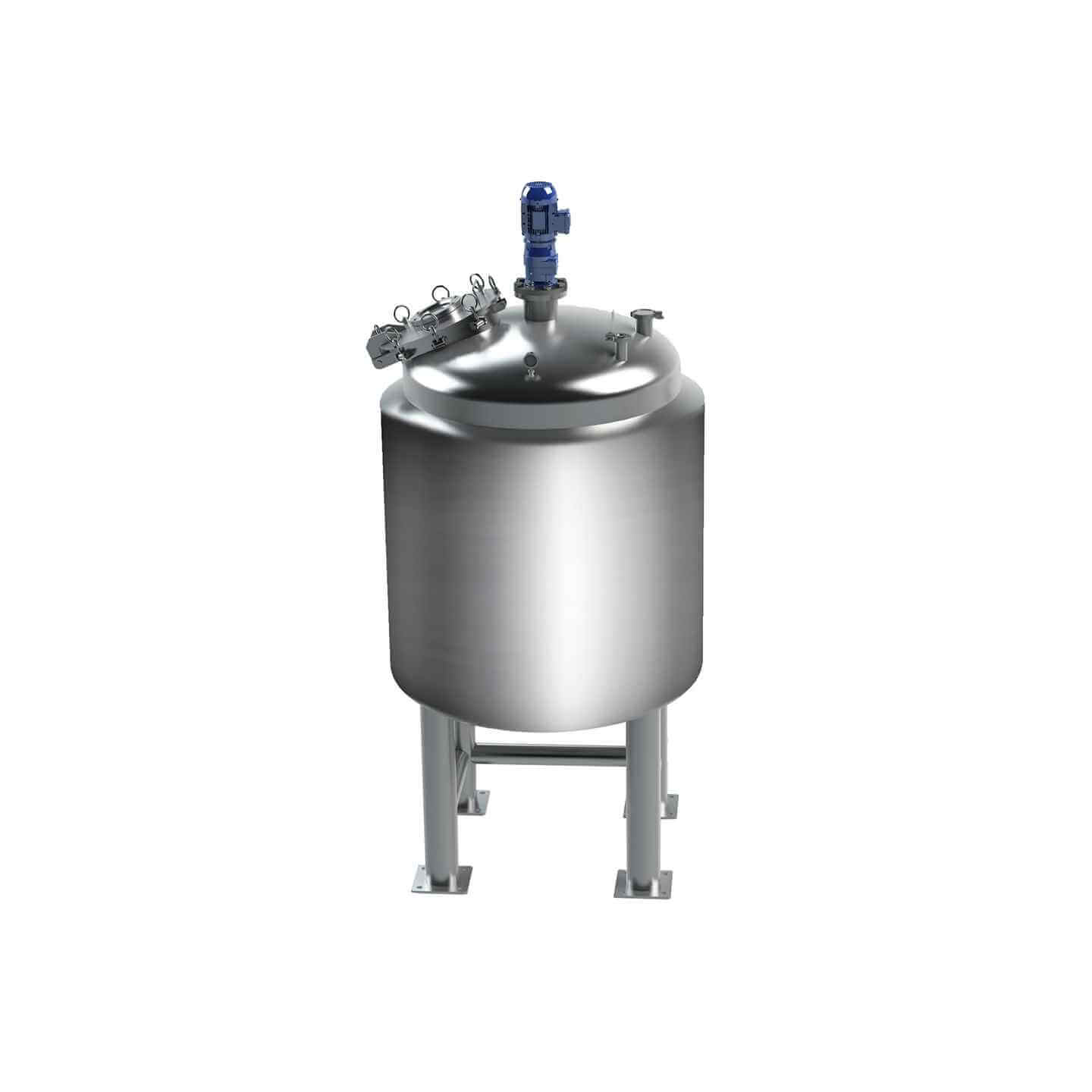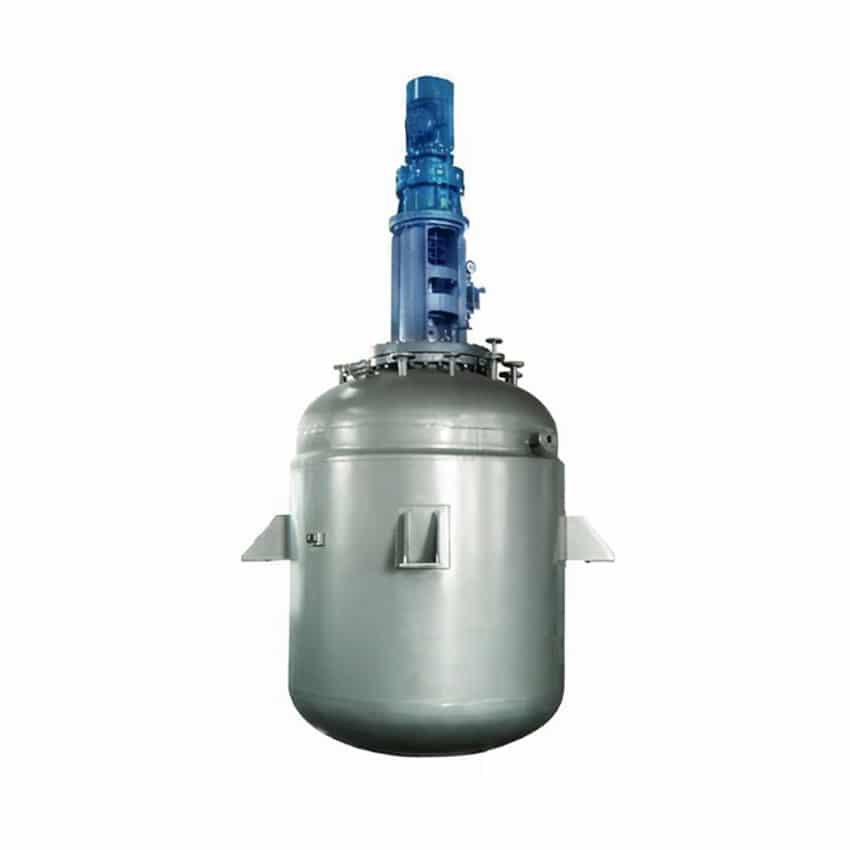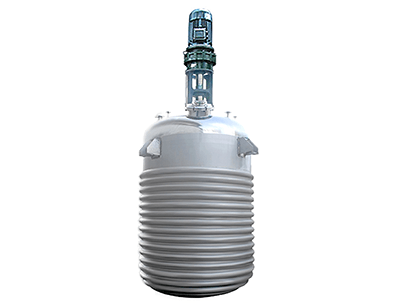

Jacketed Reactor
Jacketed reactor: used in the chemical industry, pharmaceutical industry and food industry, and other fields
Material
glass, stainless steel (316, 304), carbon steel, others
Capacity (L)
10-10000+
Mixing system
anchor, paddle, frame and others
Heating system
electric heating, oil heating and others
Jacketed reactors can be divided into steam heating reactors and heat transfer oil heating reactors according to different heating media, both of which are widely used in medicine, the chemical industry, plastics, rubber, building materials, food, and other industries. Corrosion, no environmental pollution, no need for automatic boiler heating, ease to use, and so on.
Request a quoteThe jacketed agitated reactor is the heart of chemical production, and the soul of the reaction is stirring. The jacketed agitated reactor is a device that uses a stirrer to mix a certain volume of two or more liquids and solid or gaseous materials under a certain pressure and temperature to promote their reaction. The jacket on the cylinder is mainly used for heating and cooling modules. The stirring device of the jacketed agitated reactor consists of a stirrer and a stirring shaft. The stirring form is usually determined by the process design.

Stirring type of jacketed agitated reactor
1. Paddle mixing: With the rotating shaft as the center, several blades rotate relative to each other in the radial direction. It is suitable for mixing liquids with low viscosity and low shear rate. 2-6 blades are fixed on the rotating stirring shaft of the jacketed agitated reactor. The blades can be made into two types: straight blades and folded blades. The main difference between the two types of blades is the angle. The blades of the flat blades are perpendicular to the rotation direction of the shaft. When the rotation speed is low, the fluid flows horizontally and in a circular direction. However, its stirring effect is poor. When the rotation speed of the blade increases, the radial flow of the fluid gradually increases, and the axial flow caused by the flat blade itself is very weak. The folding blade type means that the blades have an inclination with the direction of rotation. When the blades move, the fluid produces horizontal annular flow and axial split flow. The higher the rotation speed, the greater the radial flow. This type of paddle stirring has a simple structure and is easy to manufacture, but the range of axial flow produced is not large. It is mainly used for circulating stirring of fluid in jacketed agitated reactors;
2. Turbine mixing: With one or more radial flow impellers as the core, it drives the fluid to rotate at high speed and is suitable for mixing liquids with high viscosity and high shear rate. There are many types of jacketed agitated reactor turbine agitators, which can be divided into two categories: open type and disc type. The blades can also be divided into three types: straight blades, curved blades, and hinged blades. Open turbine propellers usually have about 2-5 blades, while disc turbines usually have 6-8 blades. Sometimes in order to change the flow state and stirring effect in the jacketed agitated reactor, the turbine blades can be modified into a concave or arrow shape. Weld the paddle to the disc, and then weld the disc to the stirring shaft of the jacketed agitated reactor. The working principle of a turbine propeller is similar to that of a centrifugal pump. When the turbine rotates, the liquid is sucked in from the center of the wheel and thrown out from the blade channel in the tangential direction by centrifugal force, causing violent stirring of the fluid. Moreover, the turbine stirring blade has a large shear force, which can disperse the fluid microclusters relatively finely. It is suitable for mixing low to medium viscosity fluids, liquid-liquid dispersion, liquid-solid suspension, and promoting good heat transfer, mass transfer and chemical reactions;
3. Frame mixing: supported by a fixed frame, the liquid is stirred by the rotation and sliding of several radial blades. It is suitable for mixing low-viscosity, high-shear-rate liquids;

4. Ribbon mixing: With a set of spiral blades as the core, the liquid is stirred through axial rotation and radial sliding. It is suitable for mixing liquids with high viscosity and high shear rate;
5. Paddle mixing: It uses a set of rotating paddles as the core to stir the liquid through radial rotation and axial sliding. It is suitable for mixing liquids with low viscosity and low shear rate;
6. Propulsive stirring: The shape of the stirring blades of the jacketed agitated reactor is spiral blades. This kind of stirring is more suitable for reactions with low viscosity and large flow rate. The material can enter from the top of the jacketed agitated reactor and be discharged from the bottom of the paddle to form an axial flow, and the effect of turning up and down in the jacketed agitated reactor is good;
7. Anchor stirrer: sometimes also called frame stirrer. In order to increase the stirring range in the jacketed agitated reactor, when the anchor blade rotates, horizontal annular flow is generated at different liquid heights. The rotation speed of the anchor-type agitator is not high, basically no axial liquid flow is produced, and the mixing effect is not ideal. The main feature is that the mixing range is large, it is not easy to form a stirring dead zone, and it is suitable for reactions that do not require high mixing requirements. Because the flow rate near the jacketed agitated reactor is large and the surface heat transfer coefficient is large, it is often used for heat transfer and crystallization operations, and is also often used to stir high-concentration slurries and settling slurries.
Jacketed agitated reactor these stirring types can be selected according to actual needs and the nature of the reactants. When selecting the type of stirring, factors such as reaction efficiency, uniformity, anti-adhesion, and stability need to be considered. In addition, there are other types of stirring, such as high-pressure spraying, which are suitable for specific reaction conditions and applications. When selecting the mixing type of the jacketed agitated reactor, it needs to be selected according to the specific reaction conditions and application occasions.




